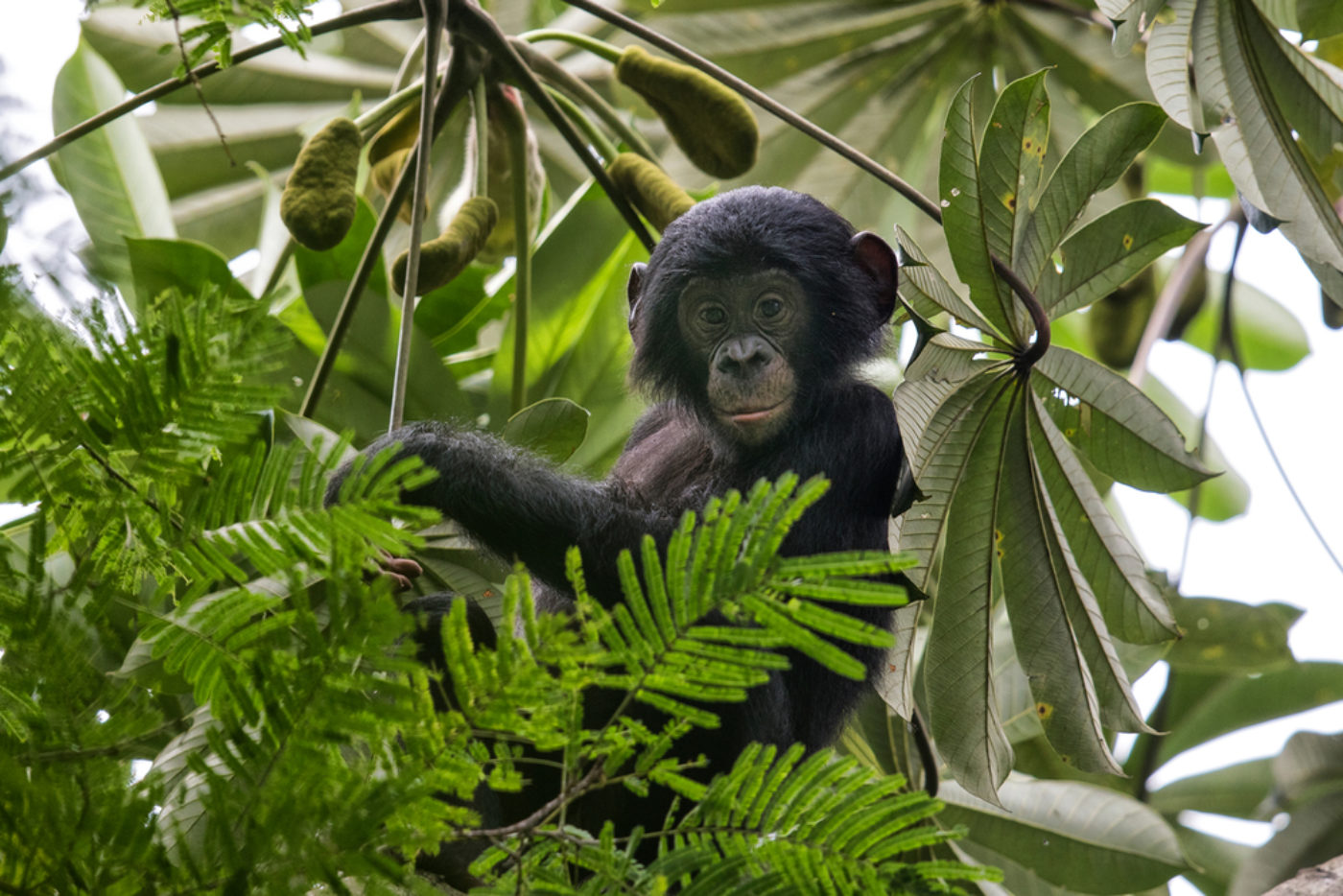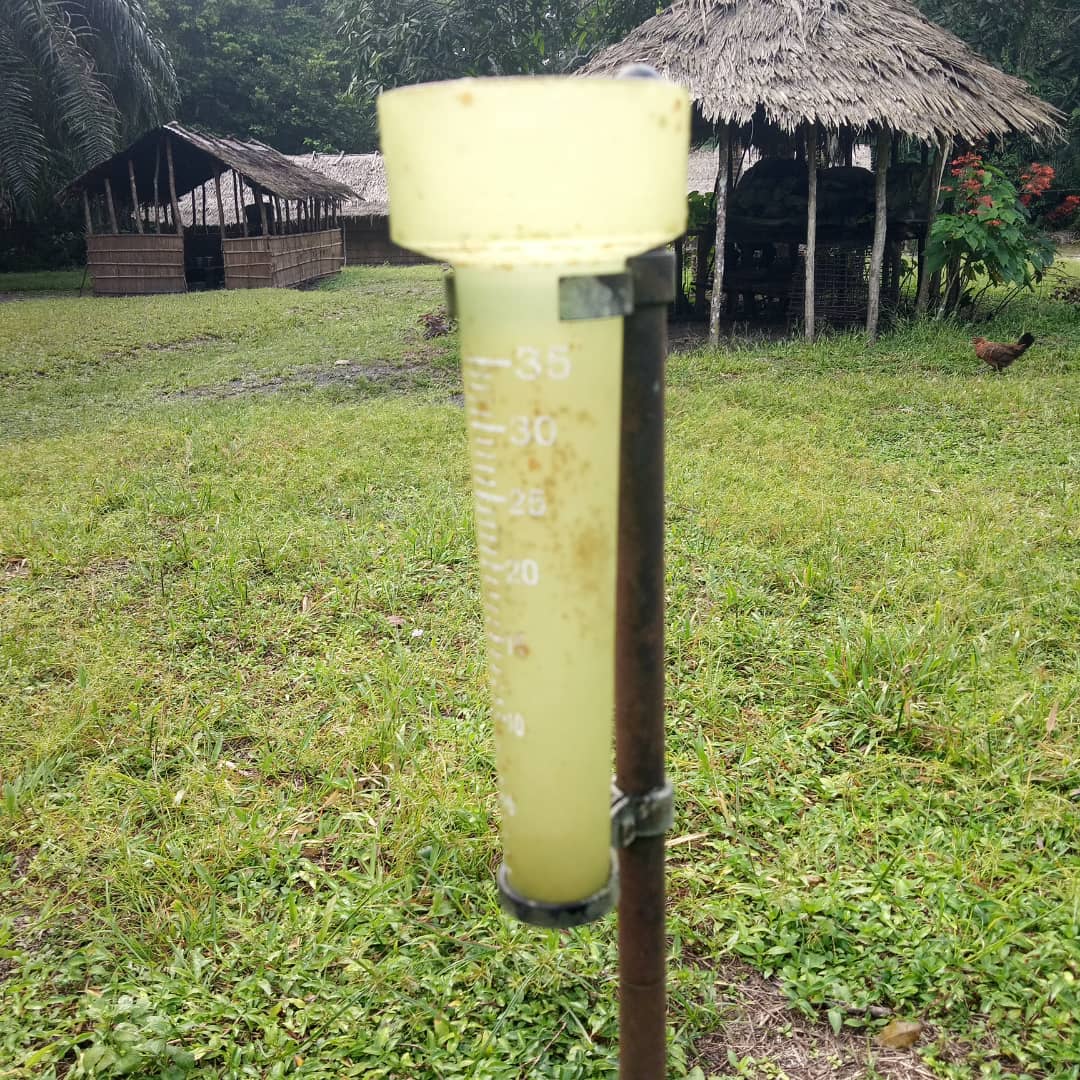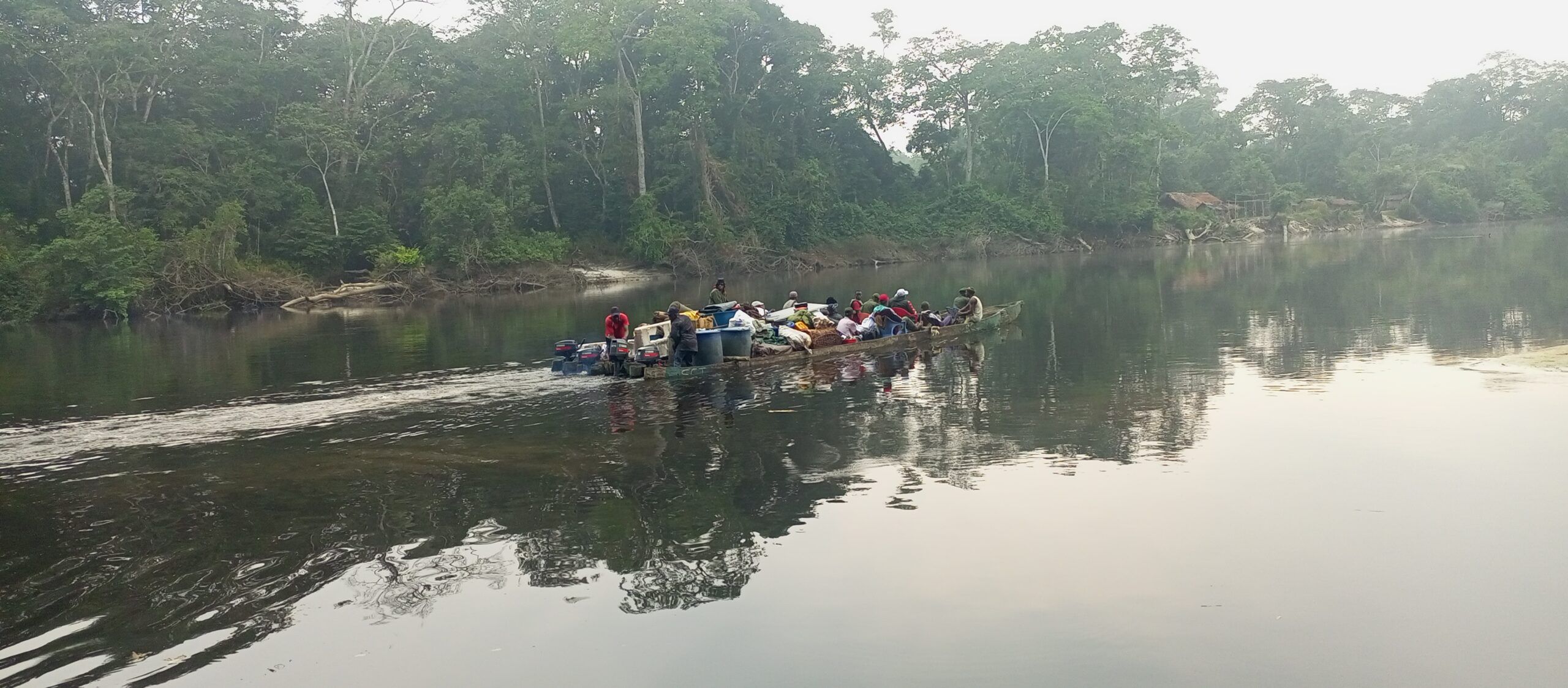In the local tradition of communities living around Salonga the bonobo holds a special place. Some say bonobos were actual humans in ancestral times but left the village because they owed money and needed to save themselves from the lenders. Tales exist in which people in peril in the vast forests of Salonga got rescued with the help of a bonobo. All in all, the bonobos’ similarity in appearance and behavior to humans is well recognized in the Bolongo culture where they are referred to as “koko”, “ancestor” or grandparents. In many Congolese villages in bonobo habitat a taboo on hunting and eating bonobos is part of the local tradition.
Today, it is very difficult to observe wild bonobos in Salonga National Park. Nevertheless, you may find traces of their presence when taking a hike in the forest: feeding remains such as dissected stems of marantaceae (or arrowroot) or some night nests high up in the canopy. Sometimes you may even hear their high pitch calls from far away. With camera traps however, we are today able not only to document their presence but also to observe their behavior undisturbed by human presence.
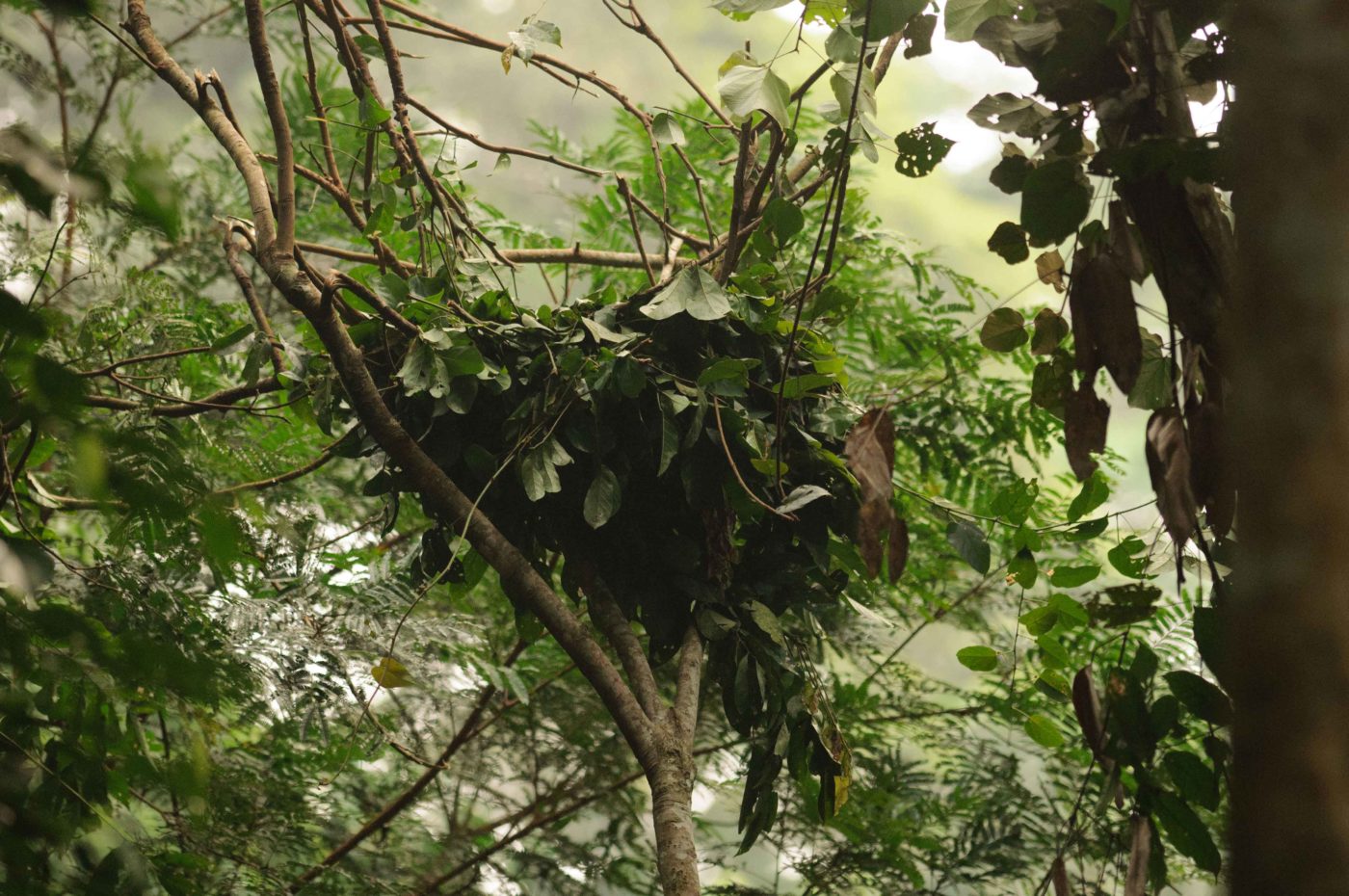
Bonobos build a nest every night.
Unique to the DRC
Bonobos live only in the lowland forest south of the Congo River. Their distribution is limited to the north and west by the Congo River, to the east by the Lualaba River and to the south by the Kasai / Sankuru river system. These large rivers constitute a natural barrier that cannot be crossed by apes. While other primates like chimpanzees and Gorillas co-habitat in many areas of their extensive range of distribution, bonobos are the only ape species within this part of the Congo basin. Salonga National Park represents therefore one of the strongholds for the conservation of bonobos being home for 15.000 individuals (biomonitoring 2018), a declining great ape species classified as endangered species by the IUCN Red List.
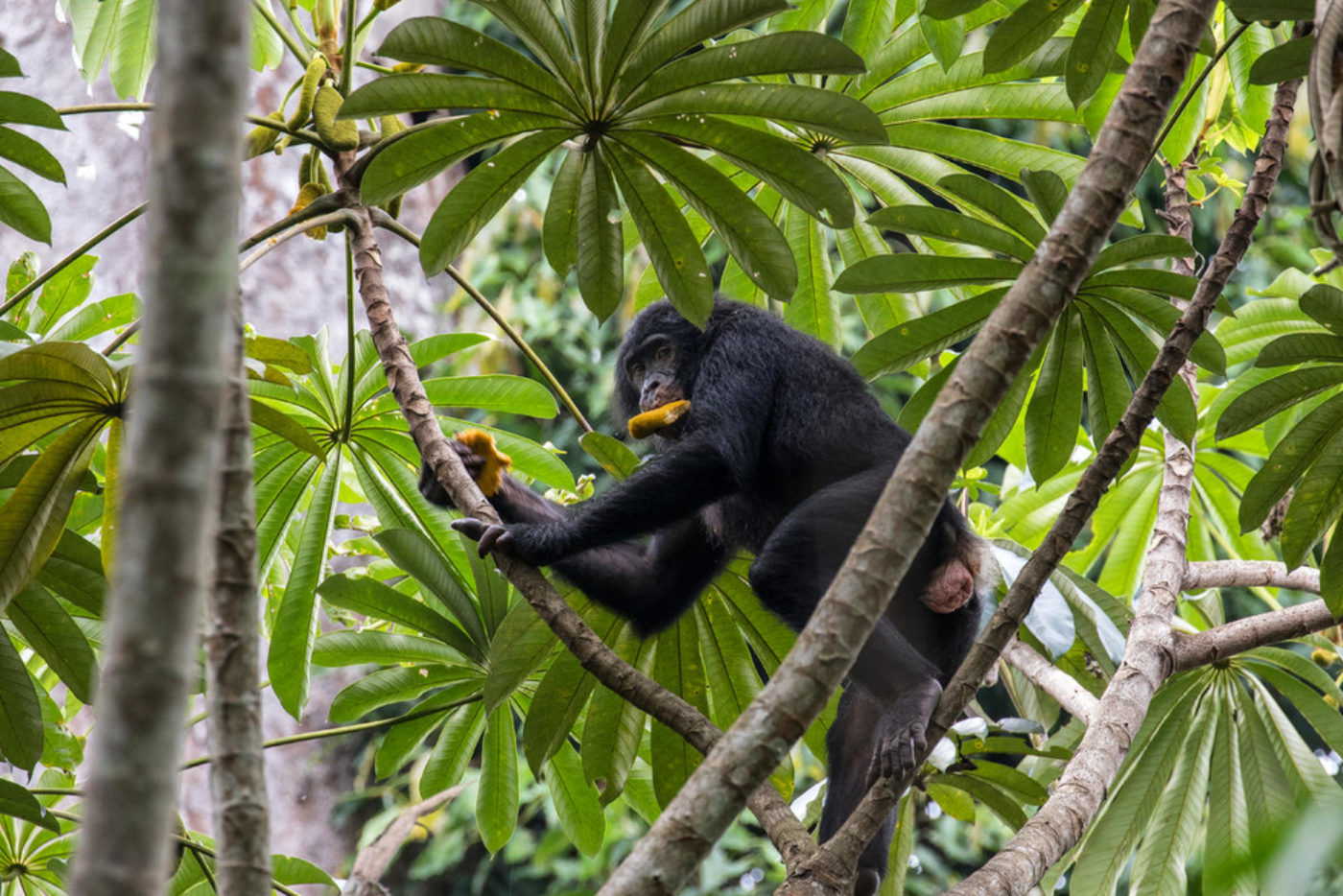
A bonobo feeding on a forest fruit.
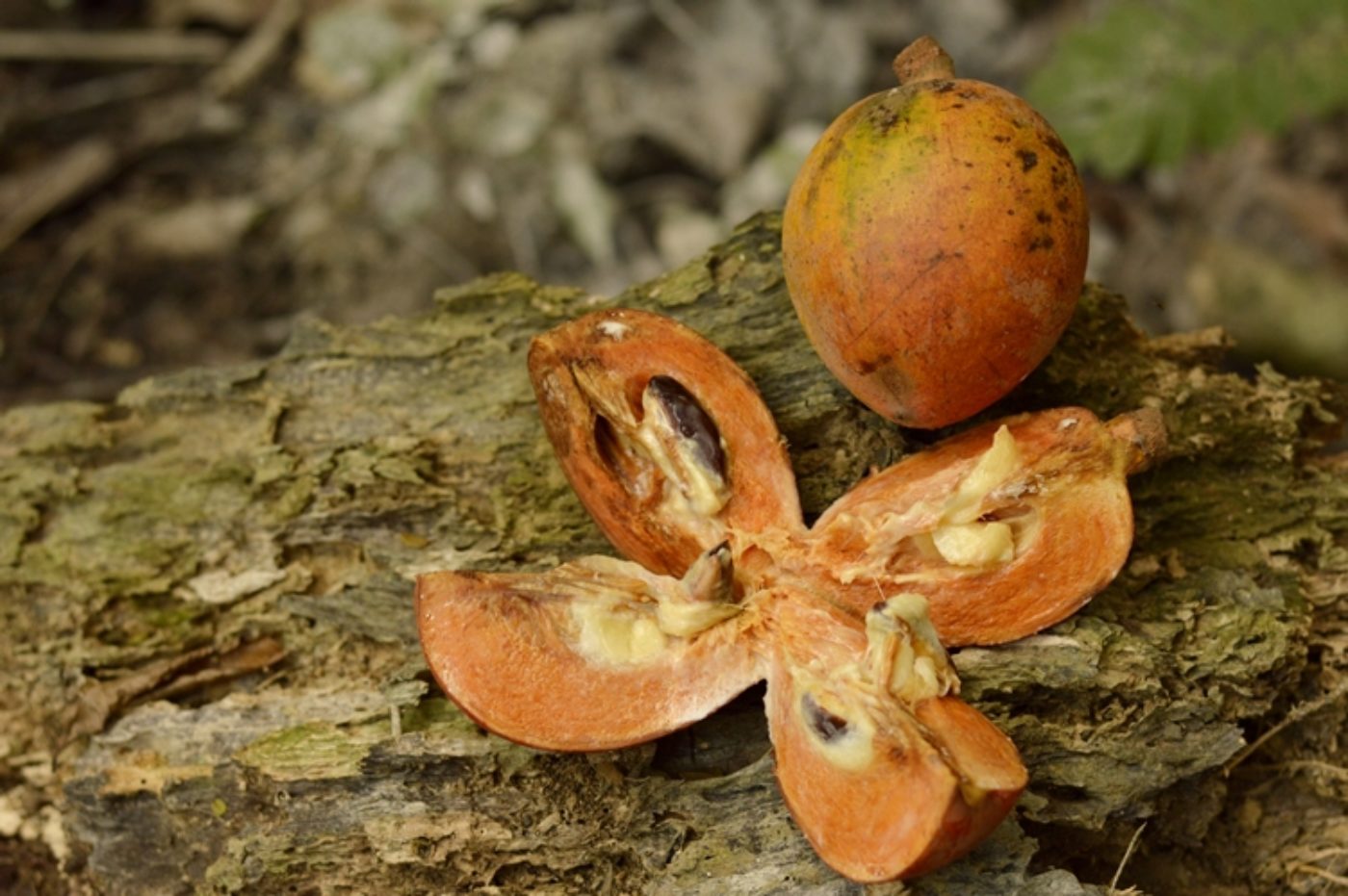
A forest fruit called mafambuli that is eaten both by humans and bonobos alike.
Our closest relatives
What is so special about the bonobo? We humans share 98.7% of the genome with bonobos who along with the chimpanzee, is human’s closest relative (https://www.nature.com/articles/nature11128). Another aspect is certainly their gentle nature compared to other great ape species: sexual acts both within and between the sexes are common means of greeting and are also used to diffuse social tension and resolve conflicts. This has earned the bonobo the nickname “hippie ape”. However, even in the gentle bonobos aggressive behavior still occurs.
Compared to other primates, bonobos are much less territorial while meeting neighboring groups at the fringe of their territory. Intergroup encounters are more like a casual meet and greet with grooming sessions between the neighbors. This is in strong contrast to the common chimpanzee where severe aggression against rivaling groups is common when establishing territorial boundaries.
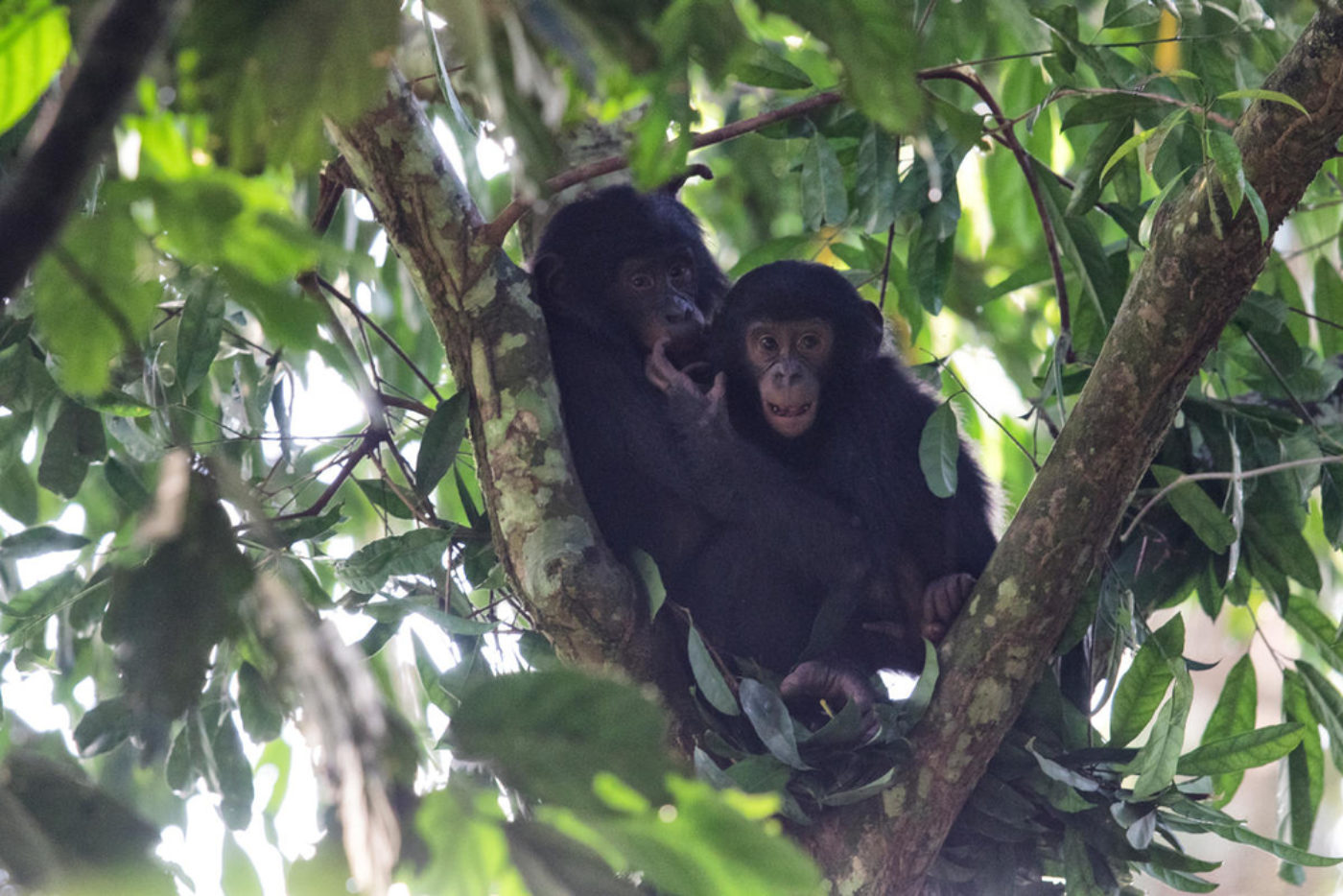
Bonobos take care of their offspring for 5-7 years.
Ladies in the lead
Bonobos show a unique social structure, the hierarchy in Bonobo society is female centered, not strictly linear and dominance is context specific. Males are rarely dominant over females and their status in Bonobo society is dependent to their mothers’ position in the hierarchy. Females maintain very close relationships especially with other females, who are mostly unrelated to each other, since it is the young females who leave their natal group.
One explanation put forward of bonobos’ gentle nature might be the relaxed competition over food.
Bonobos eat forest fruit, seeds, leaves and stems, sometimes insects and quite often the piths of herbaceous vegetation abundant in this part of the Congo forest. Furthermore, within their range, Bonobos do not compete with other great ape species over resources. Bonobos, similar to chimpanzees, do occasionally hunt small mammals and a freshly killed blue duiker is a delicacy. Females are often part of the hunting party and control the meat sharing.
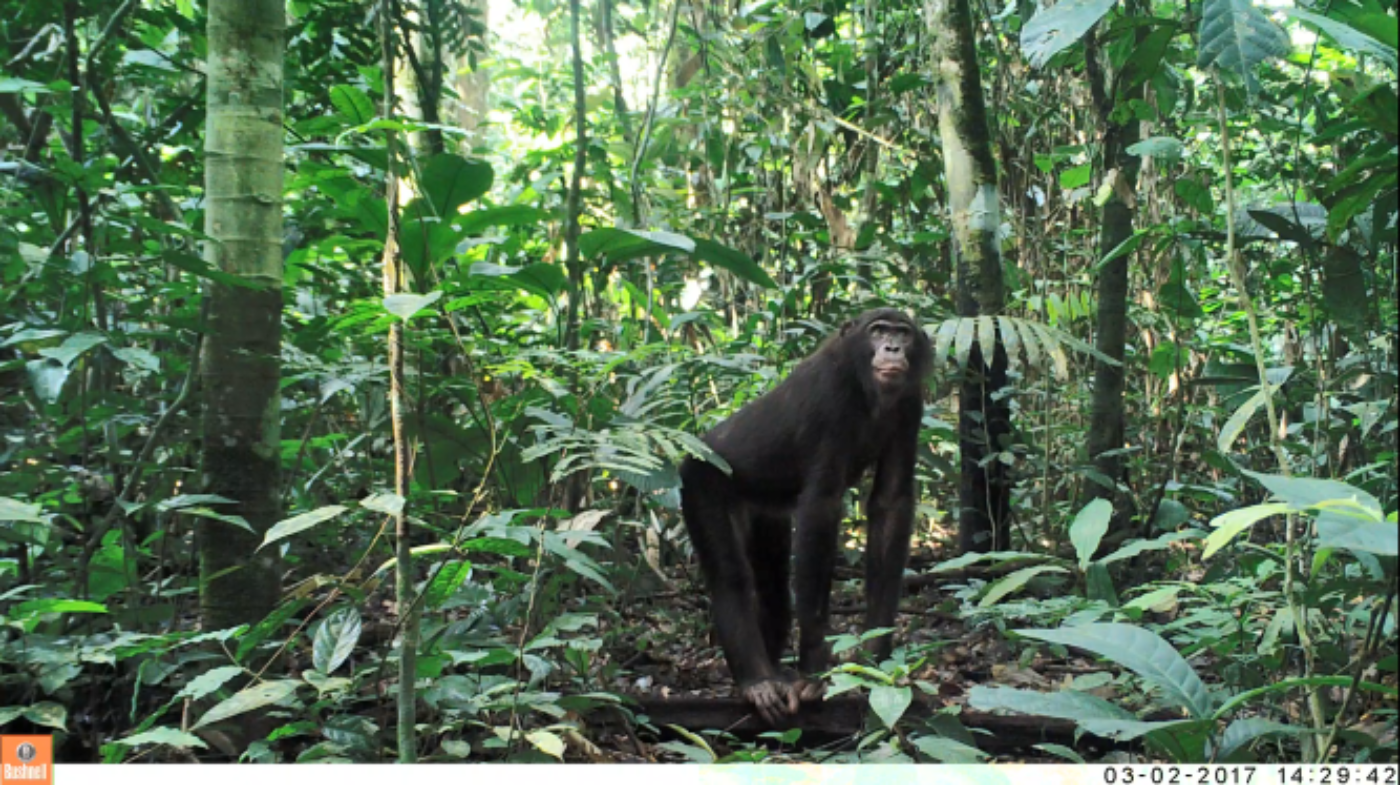
A bonobo caught by a camera trap in Salonga National Park in 2017.
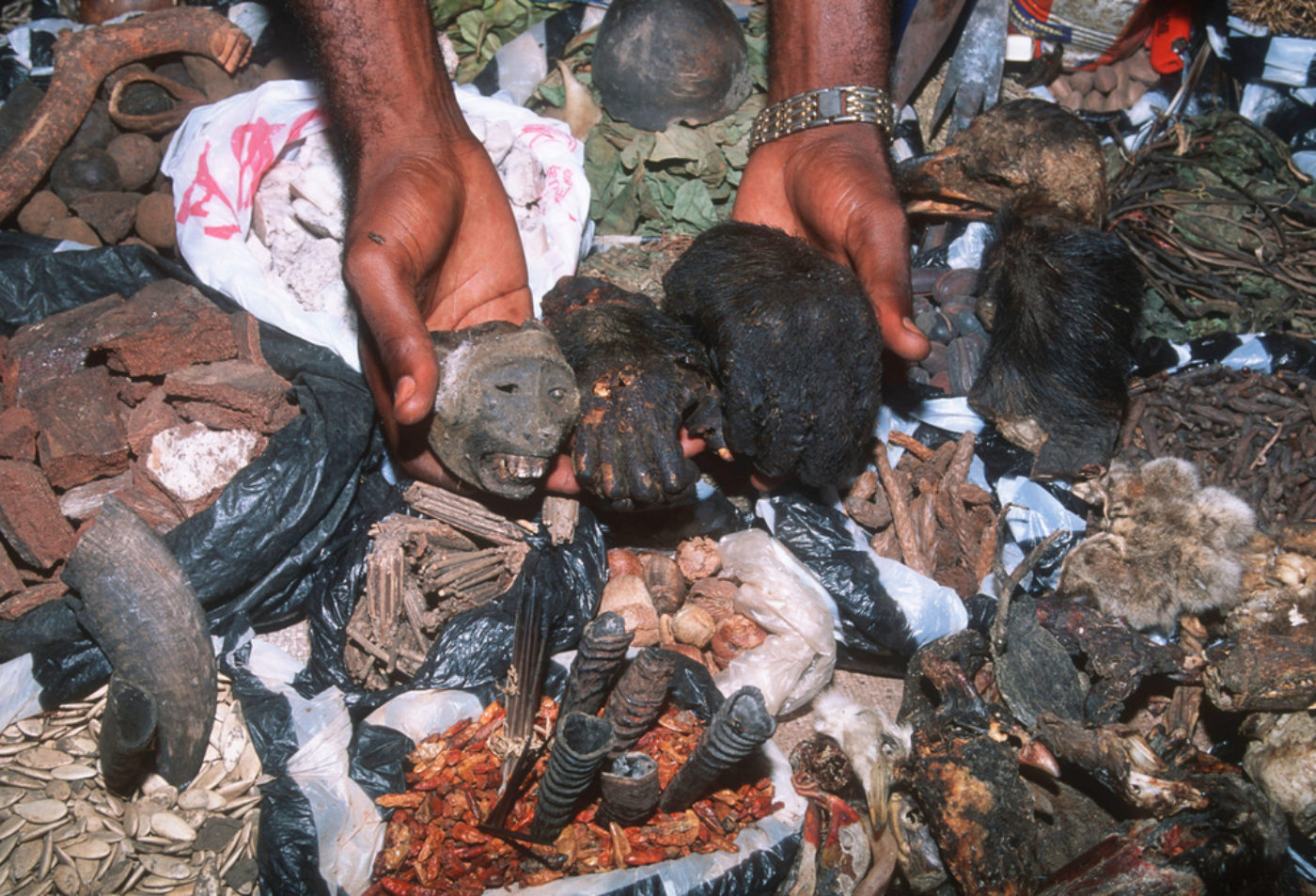
Commercial bush meat hunting often also targets great apes like the bonobo.
Bonobos under threat
The undisturbed forests of the Congo are shrinking by land use change and deforestation. On top of that, the harvesting of bush meat changed from subsistence to commercial hunting. For these reasons the numbers of our hairy cousins are steadily declining. Due to a very slow reproduction rate their population has a hard time to recover after decline. Females only give birth once every five to six years and it takes up to 10 to 14 years until the next generation of females may reproduce. Bonobos invest heavily in the upbringing of their offspring. It takes 5 -7 years for the young to learn all the tricks how to survive in the rainforest. Therefore, losing even one individual has an enormously negative impact on the group and a dwindling population.
To save the bonobos of DRC from extinction the protection of places like the Salonga National Park, which provide still large stretches of almost untouched intact forest is crucial.
